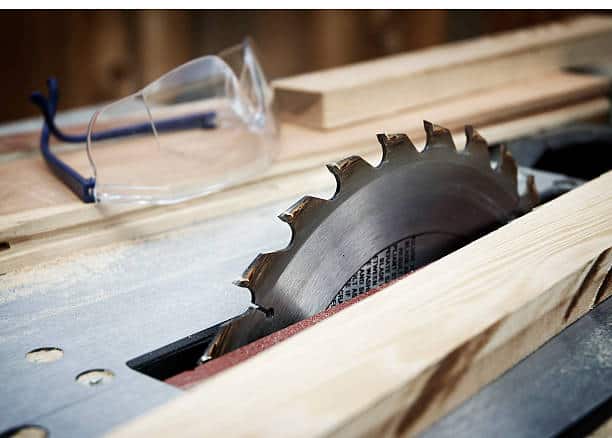A Table Saw is a standard woodworking tool and is found in almost all workshops. It features a rotating saw blade that pokes through the middle of a flat worktable.
It’s equipped with guides and fences, and its primary function is to cut artificial boards and solid wood into relatively manageable sizes.
The question that most DIYers and woodworking enthusiasts ask is whether you need a table saw for woodworking.
Although people may have varying opinions regarding this question, the truth is that this is an essential tool for any woodworking project, and thus, yes, you need it.
Over the years, the table saw has gained much popularity due to its capability to perform crucial cuts quickly, efficiently, and safely.
Consequently, it has become a core woodworking tool in almost all working stations. However, it should be handled with caution.
This piece will enlighten you more on the table saw and on whether you need it for woodworking.
Uses that You Will Need a Table Saw for
You will require a table saw for the following functionalities:
1. Ripping
The most typical use of a table saw is to cut bigger boards into smaller pieces that are easier to work with.
Cutting of wood to width, also referred to as ripping, is done parallel to the grain of the wood.
However, you should ensure that you directly run the board against the rip fence.
This will help you evade the risk of jamming your saw or twisting the board.
2. Crosscutting
Table saw are utilized to make cuts on wood lengthwise, commonly referred to as crosscutting.
This robust power tool is also used to cut across the grain of the wood.
However, this type of cut can be effectively executed using a sliding crosscut table guide.
Some of the table saws feature an adjustable miter gauge ideal for miter or angled cuts on pieces of wood.
All you need to do is to adjust it to your desired angle, counter-check it using an angle measure and firmly hold your workpiece against the fence as you pass it via the rotating blade.
3. Bevel Cuts
Table saw are ideal for making bevel cuts on pieces of wood as they are specially designed with the capability to change the angle of the blade.
All you need to do is tilt the saw blade according to your desired angle and counter-check its precision using an angle measure.
Then, switch on the power button, and you are ready to direct as usual for crosscuts or rips at a consistent angle.
Cutting Grooves and Rabbets
Rabbets and groove cuts are usually used joints cuts; they are accurately and easily executed with a table saw. Both cuts are considered as narrow and long channels in your board. Grooves are cut directed towards the center of the workpiece while rabbets are ripped out of the far edge of the workpiece.
Although a table saw can execute these cuts conveniently and quickly, they tend to be riskier. For the table saw to make accurate cuts, it needs the removal of the riving knife and the blade guard, thus exposing the user to many risks.
It would be best if you were extra cautious while making grooves and rabbets cut by ensuring no distractions in your working station while working on your workpiece.
Cutting Joints
A table saw can execute a vast array of joint cuts apart from grooves and rabbets.
However, cutting joints using a table saw needs removing the riving knife and blade guards; thus, you must practice extra caution while making this kind of woodworking cut.
Kerfing
Almost splitting a strip of wood using regularly spaced saw cuts can offer you adequate local flexibility required to execute a tight bend.
This is commonly referred to as kerfing, and it includes the removal of portions of aboard.
Even on thicker hardwoods, a table saw can be used to make this type of cut.
If the kerf spacing is closer, tighter bends will be produced.





